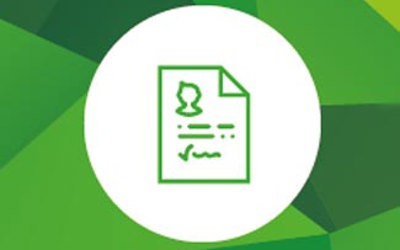Can technology simplify compliance processes?
Fraser Sinclair is the Anti-money laundering Analyst in our Financial Compliance team.
Recognising that collecting data to complete the Anti-Money Laundering (AML) certificate can be time consuming for members, we have been working with a number of case management providers to see if there is a technical solution that will speed up that process.
Last year saw the first submissions of the Anti-money Laundering certificate – a mandatory annual return of AML information. These returns provide crucial intelligence enabling the Society’s strategic shift towards a fairer, evidence driven, risk-based approach and away from a ‘one size fits all’ supervision regime.
We know that accurate completion of these submissions takes considerable time and attention with firms often relying on their existing information management systems to extract the data. Feedback from members suggested that we might work in partnership with legal tech providers on developments to better align the technical systems with AML certificate requirements.
Our conversations with legal tech providers have been based on the premise that a firm could record particular details about their clients and matters at ‘point of sale’ and, as they continue to do this throughout the year, they build the suite of information which will be used to give us their AML certificate data. We know firms are already doing this to varying degrees but there is (I’m guessing) yet to be an information management approach aligned to their yearly AML return. Take a simple example; A firm may currently record whether a client is ‘a person’ or ‘a company’. If our certificate specifically asks about numbers of Limited Partnerships separately from Limited Companies, then the recording of ‘a company’ doesn’t go far enough.
So, the questions we have been asking tech providers are
- can their onboarding/case management system fields align with AML certificate demands?
- can the accumulated inputs be extracted in a single report?
The answers so far have been ‘yes’ to both and while existing methods of data collection will need to be used for the next submission in early 2020, we hope to see the changes implemented around January 2020, in order to have data gathering in place for that calendar year onwards. If you are interested in this work, we would encourage you to get in touch with your relevant providers– the demand makes the solution all the more likely! And for firms who are still working with paper-based systems or self-administered information management (Excel etc.), we would still urge you to think about how best to align the necessary information required for the AML certificate. If you have any other ideas as to how we can improve/ease the process for the collection or submission of AML data, we would love to hear from you.
In the meantime, I would like to thank all our members for your continued cooperation with our AML supervision. Money can only be laundered where a predicate crime has taken place and some of the most serious examples of these crimes include human slavery, sexual exploitation, fraud, tax evasion and the sale of drugs and weapons – crimes which continue to shock in their all too frequent occurrence and coverage in the press and which the legal profession would be appalled to have any link with. By maintaining a strong AML culture in legal practice and continuing to comply with our AML supervisory initiatives, we can work together to minimise the risks.

The AML Certificate period is changing

AML Certificate
The AML Certificate is a questionnaire about your clients, products, services and the way that you deliver those services. It is a crucial tool in our statutory obligation to deploy a risk-based approach to our AML supervision and must be completed by those firms in the scope of the Money Laundering Regulations.

LawscotTech
Stimulating legal technology innovation in Scotland.

